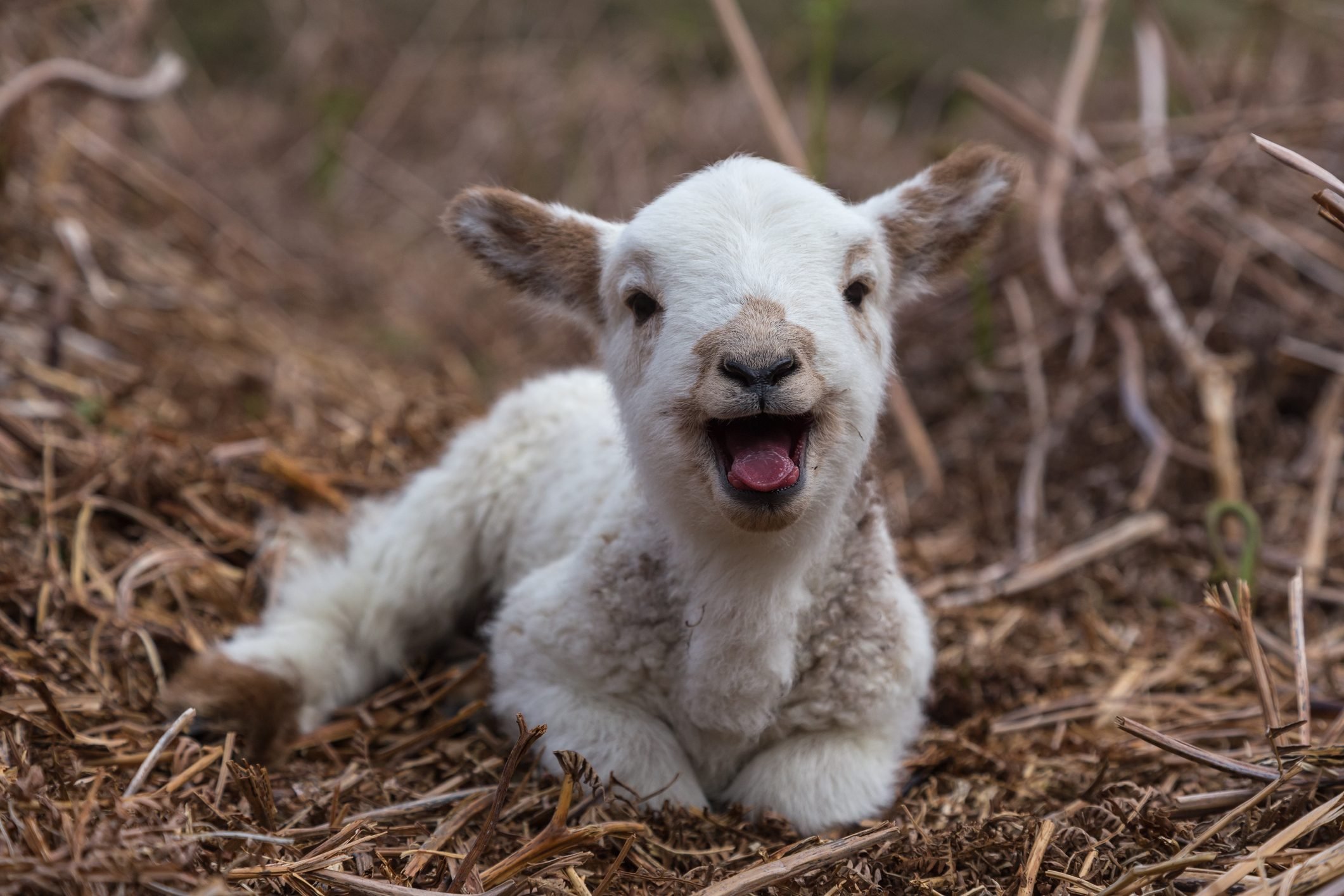
Welcome to the world, babies!
The World Health Organization (WHO) declared COVID-19, the disease caused by the novel coronavirus, a full-on pandemic on March 11, 2020. Country after country began shutting down, ordering its human inhabitants to shelter in place. But that didn’t mean that all aspects of life came to a full halt; babies continued to be born to both human and animal parents alike. And the sight of adorable animal infants—emerging into the world in nature, as well as at zoos, shelters, and rescue organizations—brings some much-needed relief (and cuteness) to these trying times. It was tough to narrow it down, but here are 15 of our favorite photos. And once you’re done, check out these other 25 adorable pictures of baby animals you’ll love instantly because let’s be honest—there’s no such thing as too many pictures of cute baby animals.
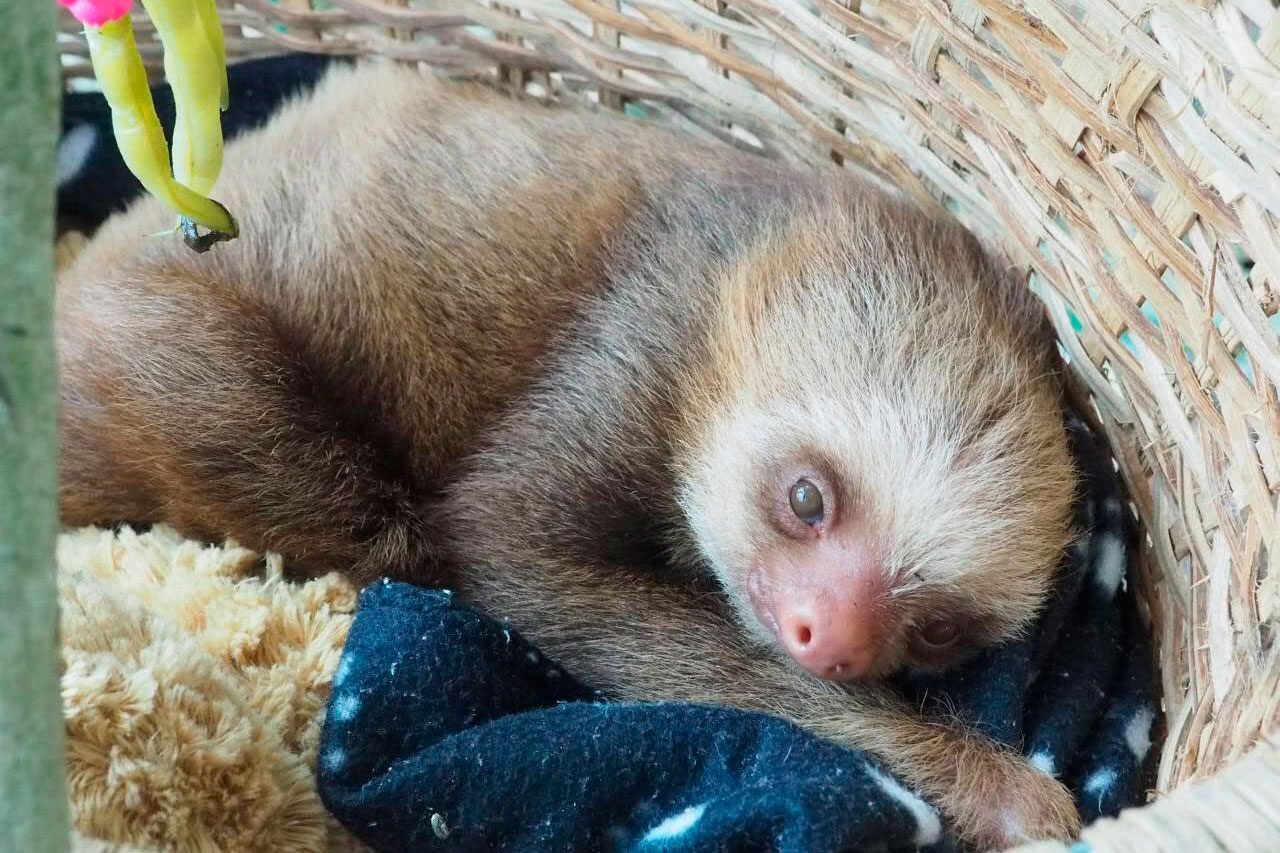
Baby sloth
At Costa Rica’s Asis Wildlife Rescue Center in La Fortuna and Las Pumas Rescue Center in the Guanacaste region, wildlife experts have been caring throughout the pandemic for a total of 332 animals—including several newborns, like this sloth. One of the country’s most iconic (and adorable!) animals, sloths are either two- or three-toed, spend 90 percent of their time hanging upside down, and are usually solitary. However, report the experts at the rescue centers, “a baby sloth is largely dependent on its mother. Abrupt separation has a major emotional impact on the animal especially when it is feeding time, and so caregivers pay keen attention to them during rehabilitation.”
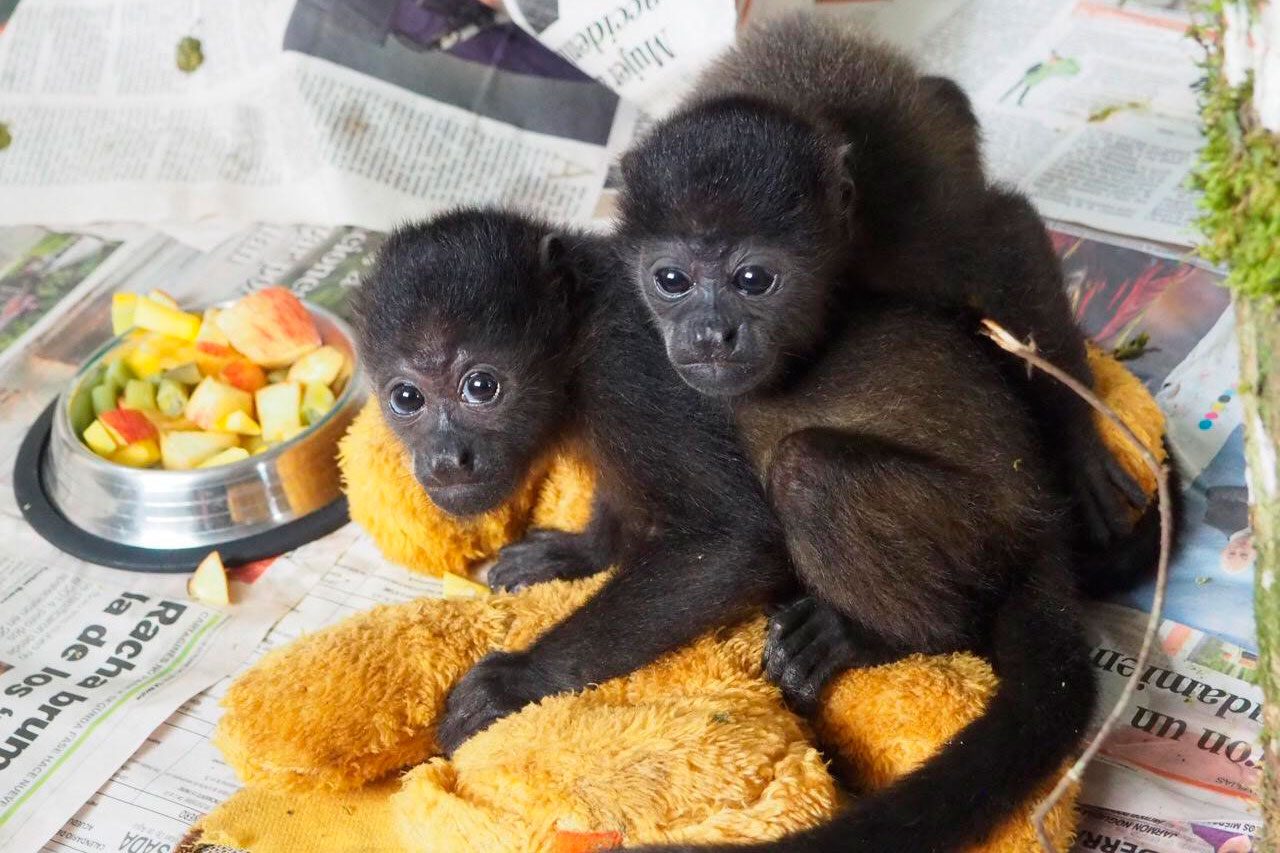
Baby howler monkeys
A well-meaning would-be Samaritan found these baby howler monkeys—so named because of the loud sounds they make to communicate with their troop and to claim their territory—on the ground and brought them to the Asis Wildlife Rescue Center, believing they were abandoned by their mother. The center calls this a “common misunderstanding, which does more damage than good for the monkeys, who retreat and face physical and emotional consequences from being pulled out of the wild” and away from their moms. The center will attempt to create a small troop with these and other monkey babies—teaching them how to be monkeys again and rely on their own instincts—before releasing them within the next year.
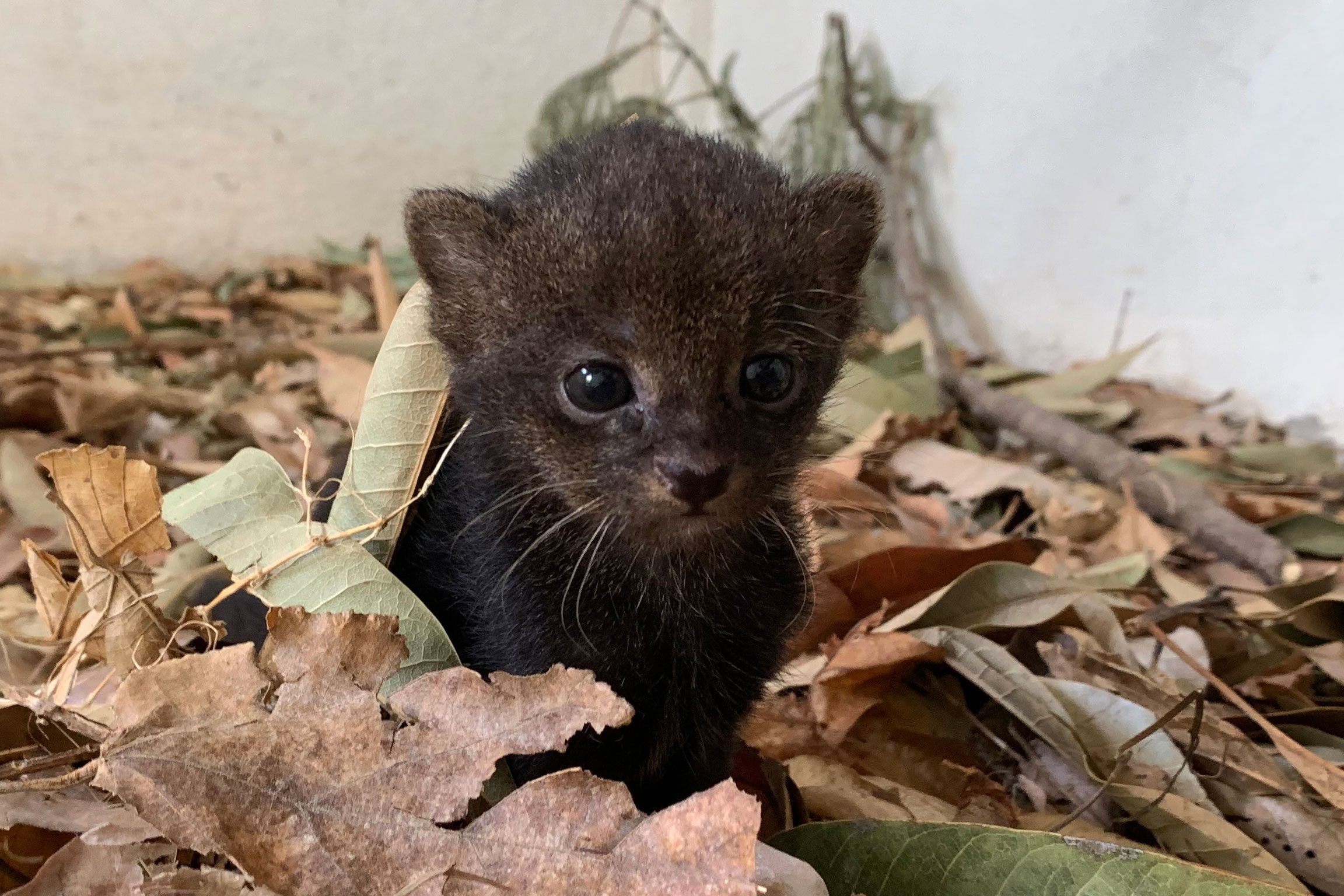
Baby jaguarundi
Costa Rican wildlife experts are also caring for this baby jaguarundi. Also known as Eyra cats, these felines can make 13 distinct sounds, ranging from a chirp to a whistle. This unfortunate little cutie was so small when found that it had to be bottle-fed, lying on a keeper’s lap along with a comforting stuffed animal. Baby mammals such as this one, say the Las Pumas experts, can spend up to one year in recovery before they’re deemed capable of caring for themselves enough to be released back into the wild. While you obviously can’t take home a baby jaguarundi, you might want to adopt one of these large cat breeds that make the cutest pets.
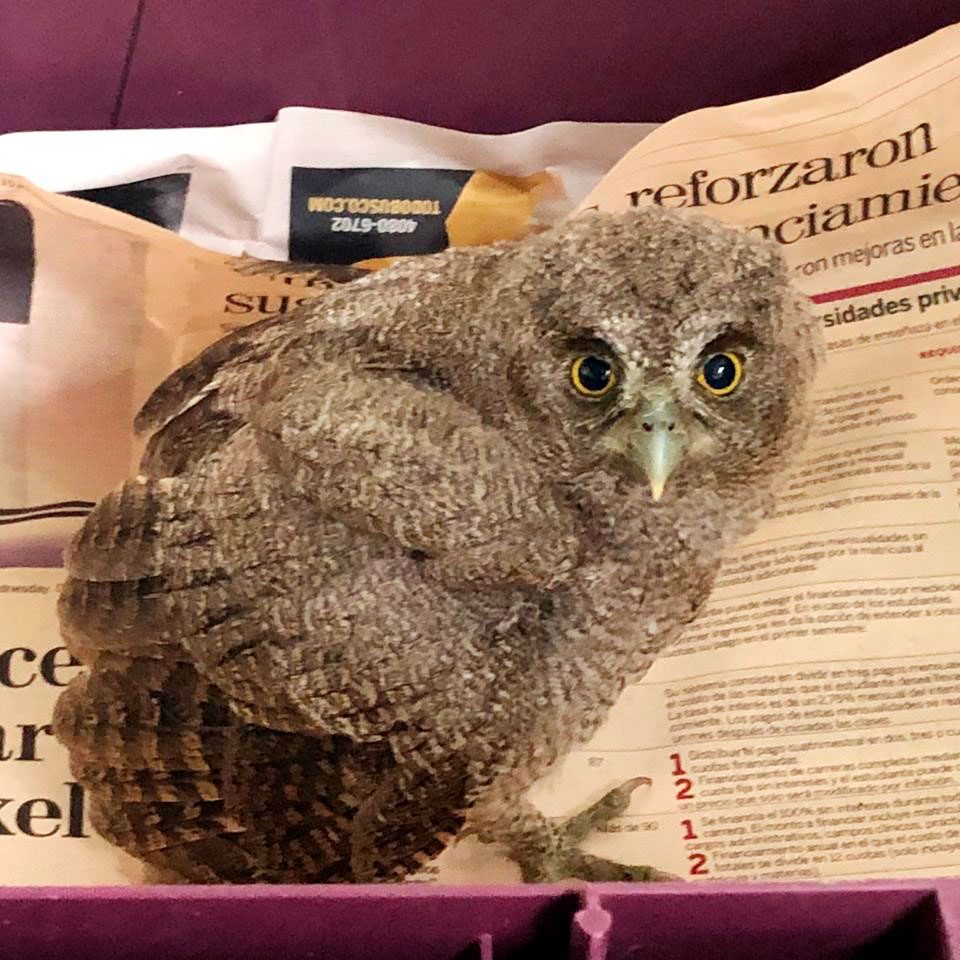
Baby tropical screech owl
Members of this winged beauty’s species are found throughout South America and into Central America as well. And although some screech owls enjoy decent ecological resiliency at the moment—these are currently listed as least concern on the IUCN Red List—this young little guy or gal hasn’t been as lucky in its short life. It’s being looked after by the Asis wildlife crew until it’s ready to fly off on its own.
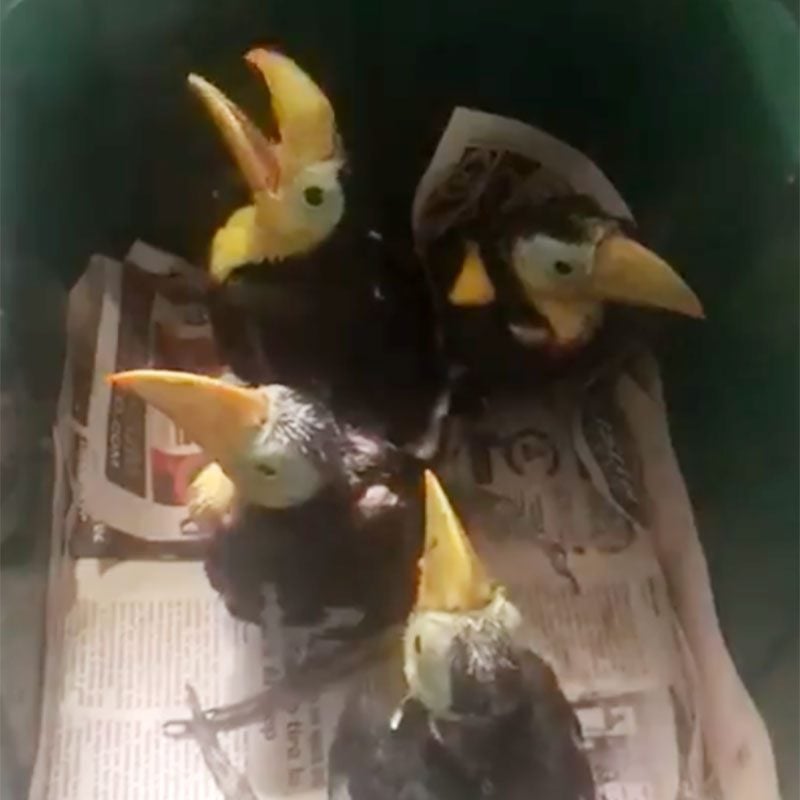
Baby toucans
These big-billed babies at Asis are still so young, they have to be hand-fed, at great risk to their caretakers’ fingers! Belonging to one of six species of the bird found in Costa Rica—fruit eaters, all of them, who play a huge role in spreading seeds to keep the forests they inhabit lush and growing—this group of four will grow into their beaks and their feet…eventually.
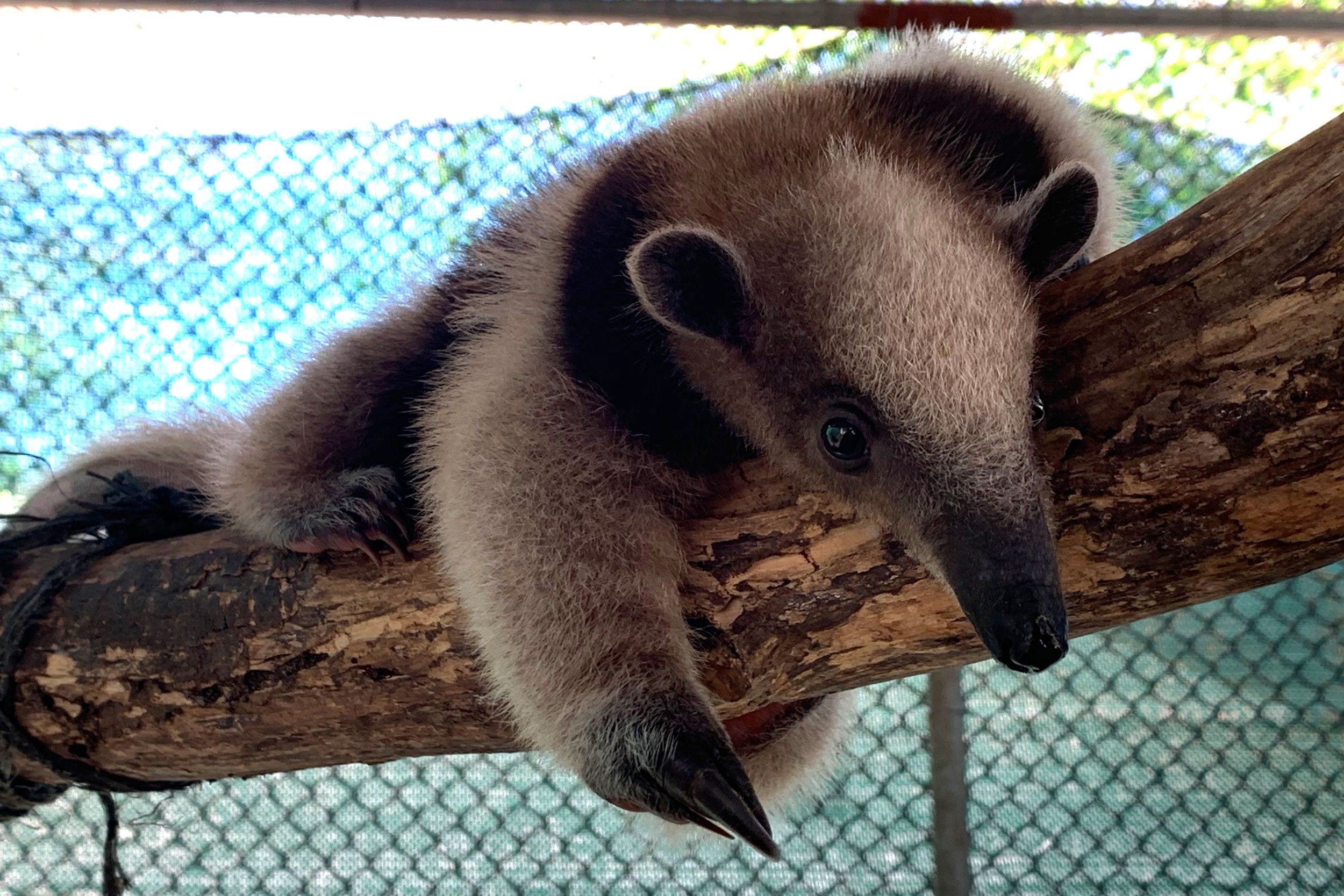
Baby anteater
Found alone in a Costa Rican village soon after it was born, this tree-dwelling lesser anteater baby, shown here at three months old, is a Las Pumas success story: It was released back into the wild after being cared for and rehabilitated. This is good news not only for the baby but for the entire Tamandua genus, some of whose members are listed as vulnerable on the IUCN Red List. These other endangered baby animals making a comeback will give you hope for the world.
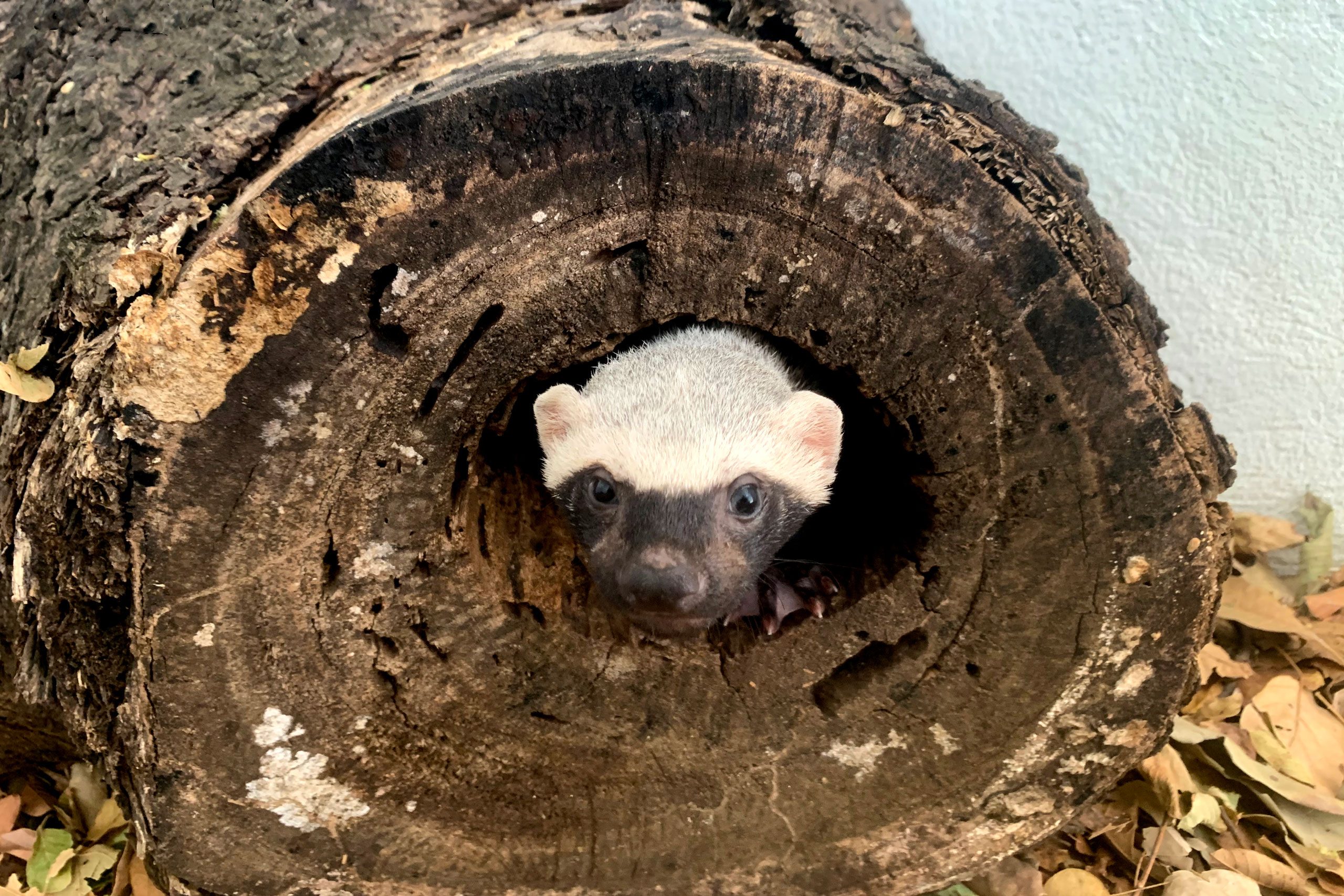
Baby greater grison
This relatively solitary member of the weasel family—which is also sometimes called a South American wolverine and mistaken for a honey badger—was found by local villagers in central Costa Rica when it was under threat of attack from a dog. They brought the puppy (that’s what some folks call baby grisons) to Asis, where it received care and was released back into the wild. Although pretty defenseless when it’s young, an adult grison is a fierce hunter and is known to swiftly kill its prey—mice, birds, lizards—with a bite to the back of the neck.
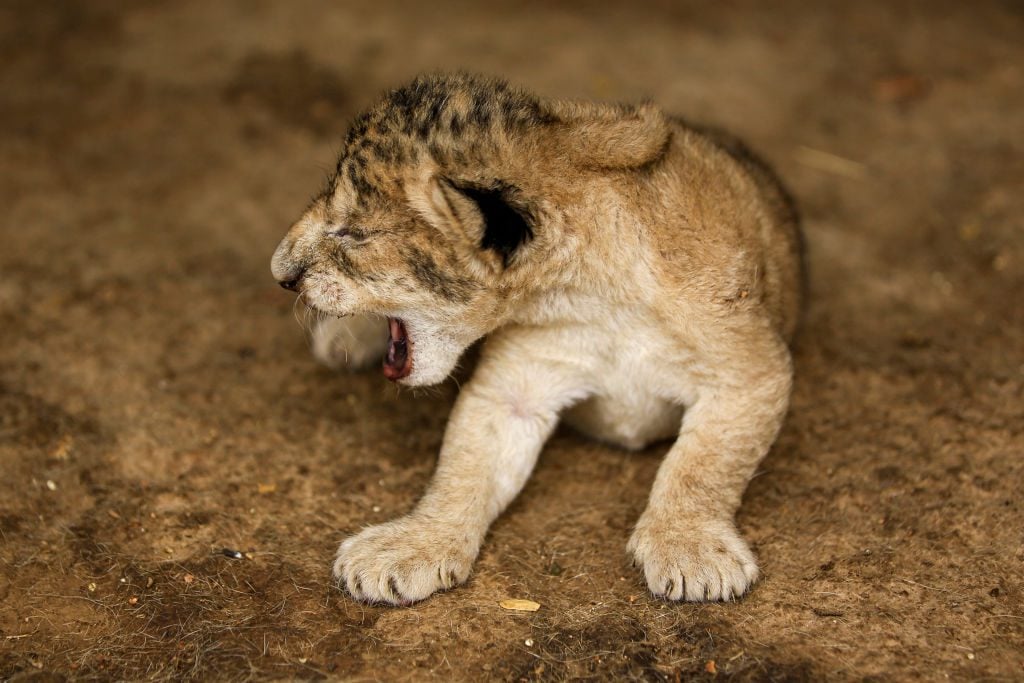
Baby African lion
African lions are considered a vulnerable species, with populations declining. And although zoos have been criticized by some as “menageries” that do not necessarily have animals’ best interests at heart, accredited zoos have become important for the conservation and reintroduction into the wild of animals such as lions. Plus, with revenue tight during the pandemic due to lost safari income from tourism that helps fund anti-poaching programs, lions need help more than ever. This sweet, sleepy cub was born at the Kuku Zoo wildlife park in Sudan during the pandemic.
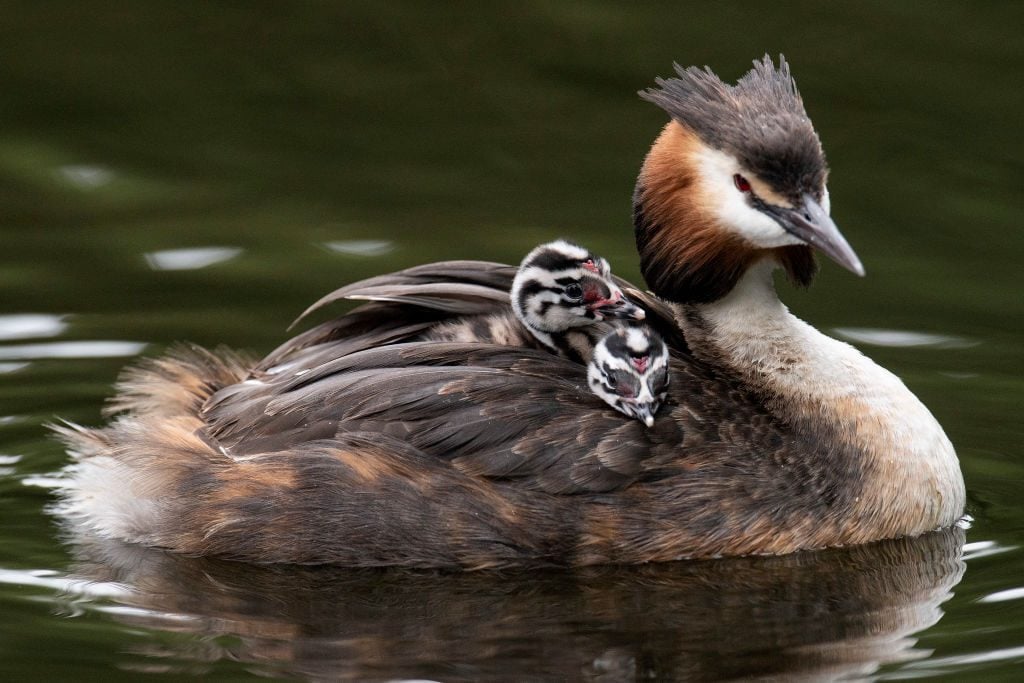
Baby crested grebes
The pandemic hit at the busy time of year for birds of all kinds, and it seems a person can’t walk out to a park or down by a river without encountering fluffy feathered babies everywhere. In London, as the city was preparing to open at the beginning of June, this mother grebe shuttled her ducklings around one of Wanstead Park’s waterways. Found across Europe, crested grebes are known for their elaborate mating dances.
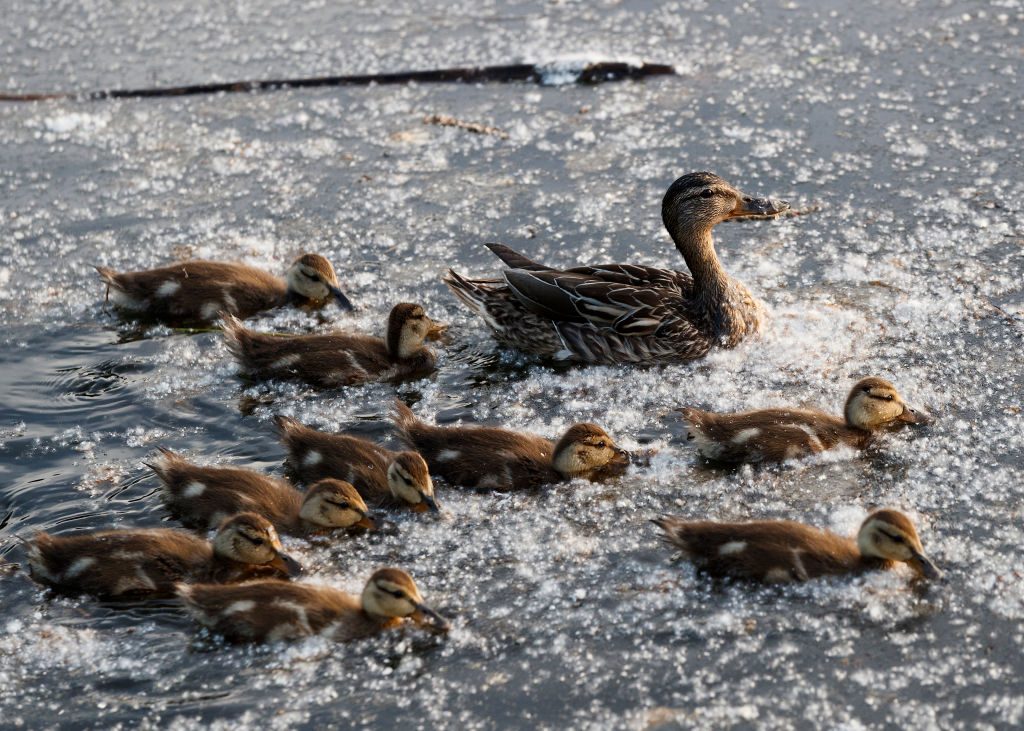
More ducklings!
These mallards, seen on Lafarge Lake in Coquitlam, British Columbia, Canada, this past May are as cute as can be. Reports indicate that ducklings abound everywhere there’s been a pandemic-related shutdown—more likely to be paraded around by their proud mamas because there have been fewer people present to harass them. These common but oddball ducks will mate with ducks from other species and are thought to be the ancestors of pretty much all domestic ducks, Mental Floss reports.
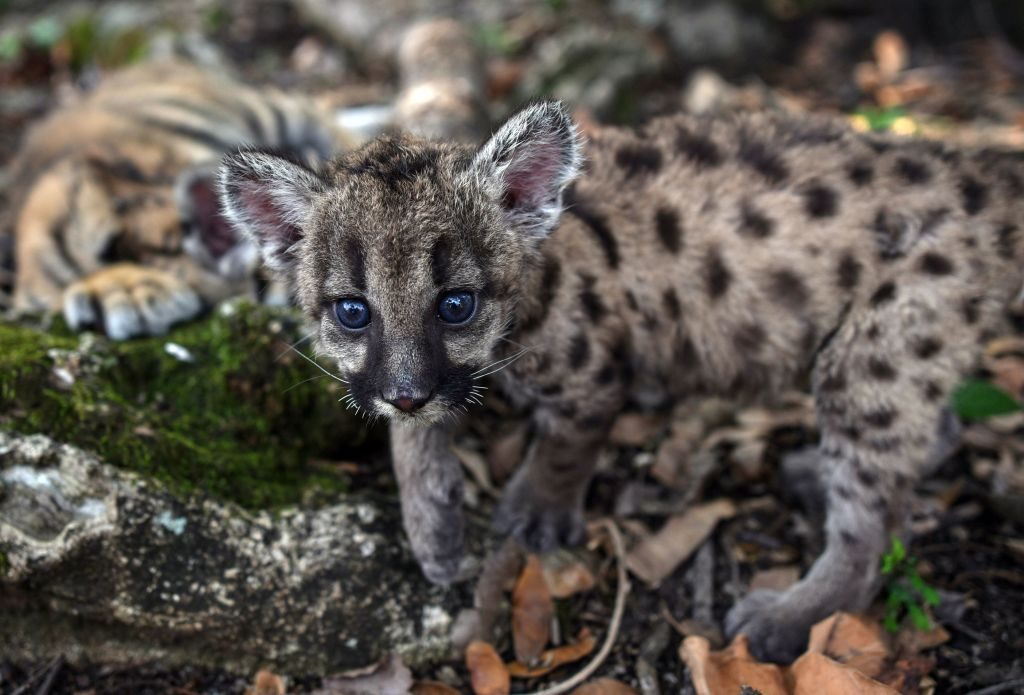
Baby American puma
This gorgeous cat is one of two American pumas born during the current health crisis at the Africa Bio-Zoo, a wildlife rescue and rehabilitation center in Cordoba, Mexico. We’re not so sure what we think about their names, though: Pandemic and Quarantine. If they sound good to you, though, check out these 35 quarantine-inspired pet names. Also known as panthers, mountain lions, and catamounts, these babies will grow to be up to eight feet long and weigh as much as 180 pounds.
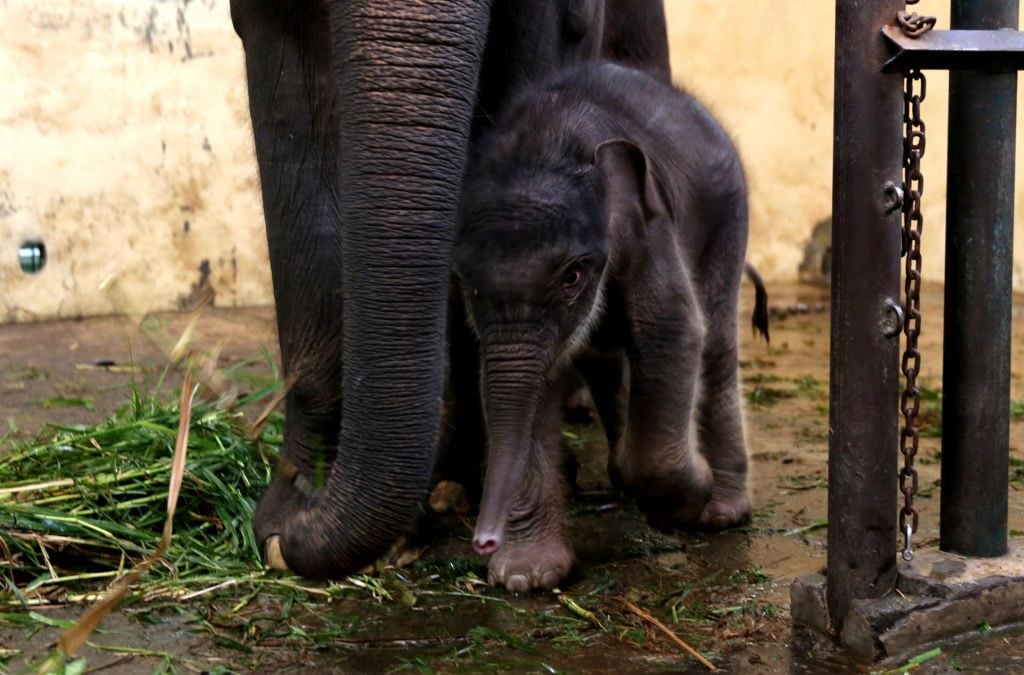
Baby elephant
The whole questionable-animal-naming thing seems to be a trend. This Sumatran elephant, born at the Taman Safari animal theme park in Bogor, West Java, Indonesia, in May, was promptly named Covid—which hardly hints at the adorableness of this shy, small, fuzzy mammal. Sumatran elephants are critically endangered due to poaching for their tusks, as well as deforestation and habitat loss; this baby is one of an estimated 2,400 to 2,800 Sumatran elephants left in the world, according to One Kind Planet. A loss for all of us, as elephants are intelligent, empathetic, and important to the ecosystems they inhabit.
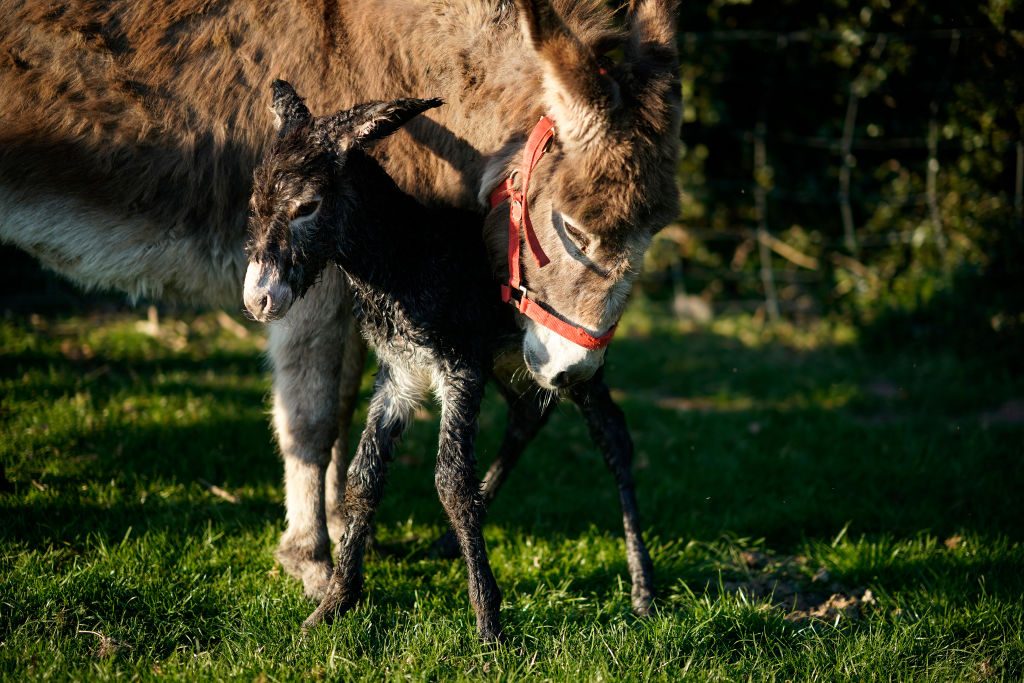
Baby donkey
This wobbly donkey foal was born just minutes before this picture was snapped at Lower Drayton Farm in Staffordshire, England, back in April. It’s just one of the who-can-say-how-many farm animals born during the coronavirus pandemic, having a bath and some quality time with mom before getting to work in the fields.
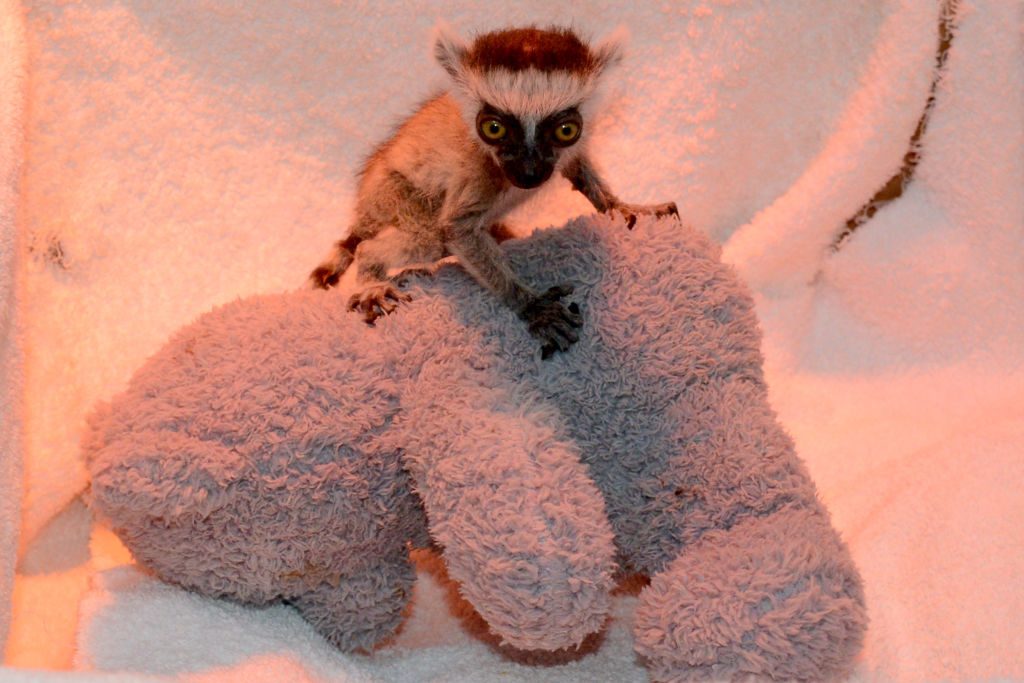
Baby ring-tailed lemur
After being rejected by its mother, this baby ring-tailed lemur—a species listed as endangered by the IUCN Red List—was receiving care from zookeepers at Safari Park in Krasnodor, Russia. Animals can be rejected by their mothers for a variety of reasons; they may be too small or weak to avoid predation, for example, the VioVet blog reports, or their mothers may be too short on resources to care for another infant.
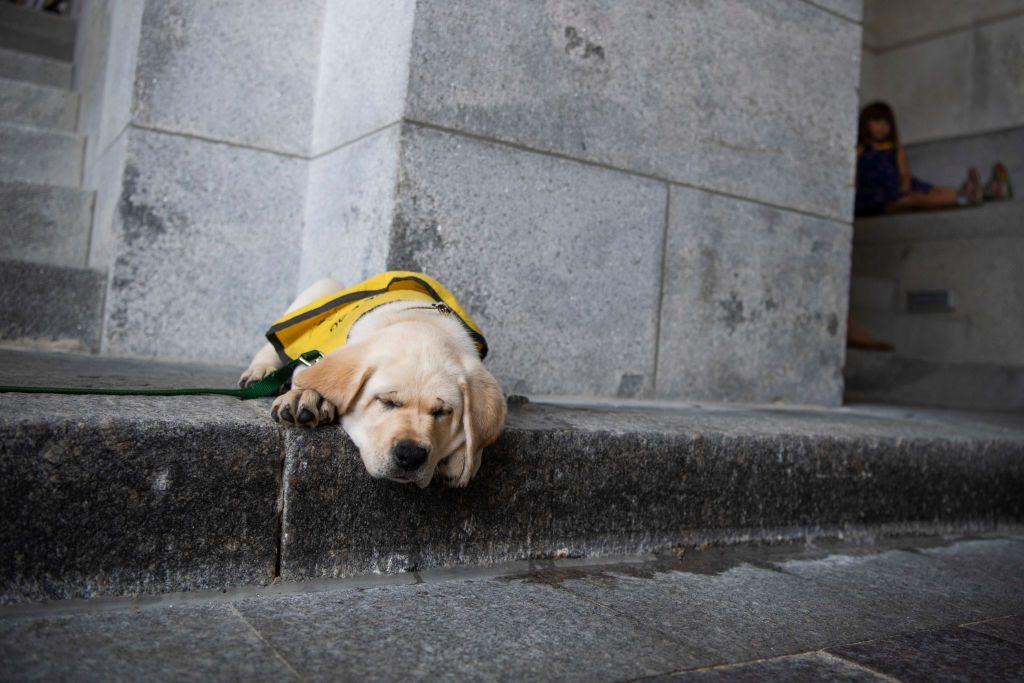
Baby yellow Lab
There are an estimated 10,000 guide-dog teams working in the United States, according to the organization Guiding Eyes for the Blind. And new ones are being born and trained all the time—like this little fellow named Damon, two months old at the time of this photo, snapped in late June. He’s taking a snooze after a taxing morning with his handler, who was attending a climate event in Washington, D.C., with the House Democrats.
For more on what animals and humans have been up to recently, as well as what’s next for all of us, see our comprehensive Coronavirus Guide.
